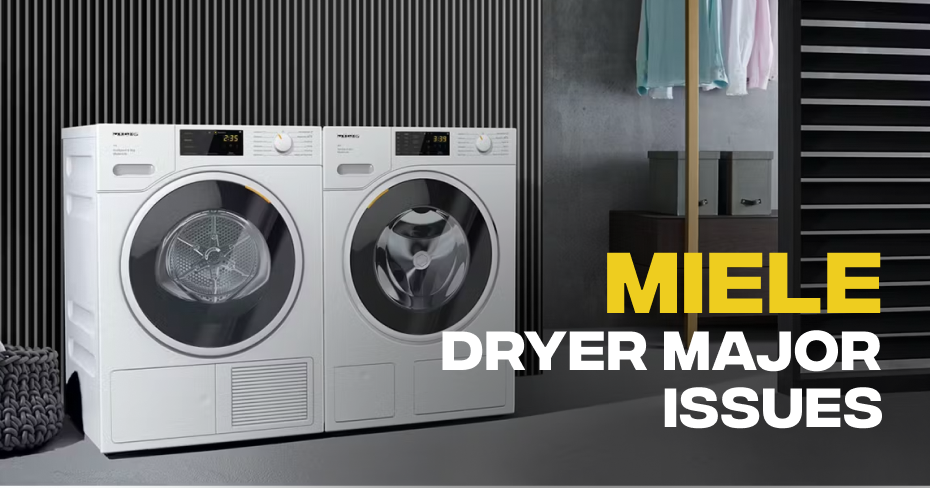
Miele Dryer Sensor Troubles
Sensors play a critical role in the efficient operation of your Miele dryer. They help detect moisture levels, adjust drying times, and ensure your laundry is dried perfectly without wasting energy or damaging fabrics. When sensor troubles occur, you may notice that your dryer is running longer than usual, stopping prematurely, or leaving clothes damp. Understanding the causes and solutions for sensor issues can help you maintain optimal dryer performance.
Why Sensor Troubles Occur in Miele Dryers
Over time, moisture sensors can become coated with residue from fabric softeners, dryer sheets, or lint buildup, which interferes with their ability to accurately detect wetness. Additionally, improper load sizes, mixed fabric types, and blocked airflow can also affect sensor readings, leading to inconsistent drying results. When the sensors cannot correctly measure the dryness of clothes, the dryer may either stop too early or continue running unnecessarily, wasting energy and potentially harming your garments.
How to Fix and Prevent Sensor Problems
One of the most effective ways to address sensor troubles is regular maintenance and mindful usage. Cleaning the moisture sensors using rubbing alcohol and a soft cloth removes any residue that might cause false readings. It’s also important to ensure that the dryer is neither overloaded nor underloaded, as both can lead to inaccurate sensor data. Balanced loads allow air to circulate properly and help sensors gauge moisture levels more precisely.
Using the correct drying settings tailored to the type of fabric and load weight also improves sensor accuracy. For example, delicate fabrics need shorter drying times, while heavier fabrics require longer cycles. If your dryer’s sensors are covered or blocked by large items of clothing, sensor performance can be impaired, so arranging the load to expose the sensors is beneficial.
Additionally, keeping the lint filter clean after every drying cycle ensures good airflow, which supports sensor function and drying efficiency. Avoid mixing heavy and light fabrics in the same load whenever possible, as this can confuse the sensors and result in uneven drying.
Testing and Professional Help
To verify if your sensors are functioning properly, try running a sensor drying cycle with a load of similar fabric types and weights. This test can help identify if sensor troubles persist or if the problem lies elsewhere.
If problems continue despite troubleshooting and maintenance, consulting a qualified Miele appliance technician is advisable. Professionals have the tools and expertise to diagnose sensor malfunctions, replace faulty parts, and ensure your dryer operates at peak efficiency.
The Importance of Sensor Maintenance for Energy Efficiency
Proper sensor operation not only guarantees perfectly dried clothes but also reduces unnecessary energy consumption. By preventing over-drying, sensors help extend the life of your garments and reduce utility bills. Regularly maintaining your Miele dryer’s sensors and following manufacturer guidelines will ensure long-lasting performance and reliability.